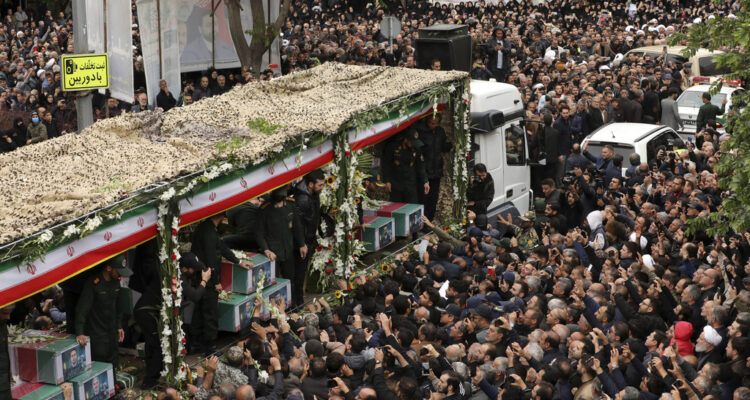“There was fog on the ground but not in the air,” said the Iranian president’s chief of staff, who was on an accompanying helicopter at the time.
By Batya Jerenberg, World Israel News
Gholamhossein Esmaili, the late Iranian president’s chief of staff, told state television that weather was not a factor in Sunday’s death of President Ebrahim Raisi.
Esmaili was traveling in one of the two other helicopters in the air entourage that was making its way back from a ceremony inaugurating a dam on the border with Azerbaijan.
“The weather was clear, and completely bright and fine” when the flight began, he said.
About half an hour into their trip, Raisi’s pilot ordered the three to rise above clouds that were on their level, but after about “30 seconds, [my] pilot noticed that the main helicopter was not with us,” he said.
When the interviewer asked him if there had been fog there, as other reports had mentioned, he answered, “There was fog on the ground but not in the air where we were advancing…. However, in one small, compacted area there was a small patch of clouds above a cliff.”
They first believed that Raisi’s helicopter had made an emergency landing for some reason, because radio contact had been lost. The president’s pilot, he added, didn’t respond to all their attempts to reach him.
According to Esmaili, another passenger, Mohammad Ali Ale-Hashem, did pick up the radio eventually and said he didn’t know how they had crashed, that he was among some trees, and was alone and injured.
His body was later recovered among the other victims.
The president’s chief of staff’s conclusion was that the victims of the crash had been “martyred,” which is a term commonly used by Islamists to refer to those who die defending their religion.
However, he also said that it had been “too risky” to search from the sky.
“Our pilot circled around the area a few times,” he noted, “but the area with the cloud patch was also invisible to us and it was too risky to enter.”
Many Iranian outlets reported on the “severe weather conditions” that were hindering rescue efforts immediately after the crash, showing footage of dozens of men scouring the mountainous area in a heavy fog while being buffeted by strong winds.
When interviewed Monday on state media, former Iranian foreign minister Mohammad Javad Zarif charged that the U.S. was ultimately to blame for Raisi’s death “because of its sanctions that bar Iran from procuring essential aviation parts.”
The president was on a Bell 212 Twin Huey helicopter that was purchased by the Shah’s regime prior to the Iranian revolution, making it some 40 years old.
All aerial vehicles need parts replaced over time. At least one news anchor said that one line of investigation would be if the president’s helicopter had been air-worthy or not.





